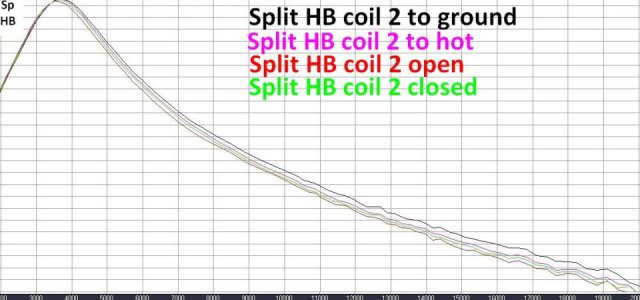Chistopher
malapterurus electricus tonewood instigator
I was doing research into how Lace Sensor designs some of their pickups, most notably the D3 and Alumitone series. The way I understand the Alumitone is that when you "split" it you are actually disabling one of the secondaries of the little transformer they put in there. This has the interesting effect of making it so there is a wrong way to split it. When you wire it up, you are supposed to ground the split wire and lift the ground wire instead of just ground the split wire.
For those who don't know what I'm talking about, when you ground the red/white link on an SD pickup, the north coil has a hot and ground, so you can hear it, but the south coil has two grounds, so you can't hear it. What I'm referring to would be the equivalent of grounding the white wire and lifting the green wire. This leaves the north coil with a hot and a ground, and the south coil with nothing. The conventional wisdom says this makes no differences, but I can't think of one person who has experimented with it.
Now I'm assuming the reason you aren't supposed to leave the other coil attached in the Alumitone is because the Alumitone is a transformer based design, allowing eddies to goof around in a disabled coil would, through the principle of mutual inductance, inadvertently effect the performance of the other coil of the transformer?
I assume all this is such a big deal because of the high current / low voltage nature of the Alumitones and the more tightly coupled nature of the secondary coils relative to a standard humbucker, but is their reason to think that the eddies of a shorted coil effect the performance of the active coil in a traditional split humbucker?
For those who don't know what I'm talking about, when you ground the red/white link on an SD pickup, the north coil has a hot and ground, so you can hear it, but the south coil has two grounds, so you can't hear it. What I'm referring to would be the equivalent of grounding the white wire and lifting the green wire. This leaves the north coil with a hot and a ground, and the south coil with nothing. The conventional wisdom says this makes no differences, but I can't think of one person who has experimented with it.
Now I'm assuming the reason you aren't supposed to leave the other coil attached in the Alumitone is because the Alumitone is a transformer based design, allowing eddies to goof around in a disabled coil would, through the principle of mutual inductance, inadvertently effect the performance of the other coil of the transformer?
I assume all this is such a big deal because of the high current / low voltage nature of the Alumitones and the more tightly coupled nature of the secondary coils relative to a standard humbucker, but is their reason to think that the eddies of a shorted coil effect the performance of the active coil in a traditional split humbucker?

